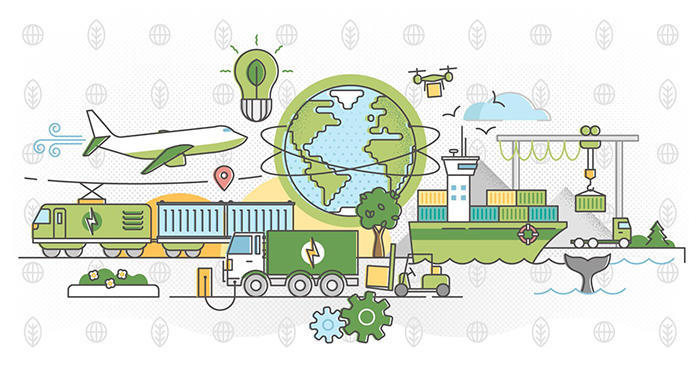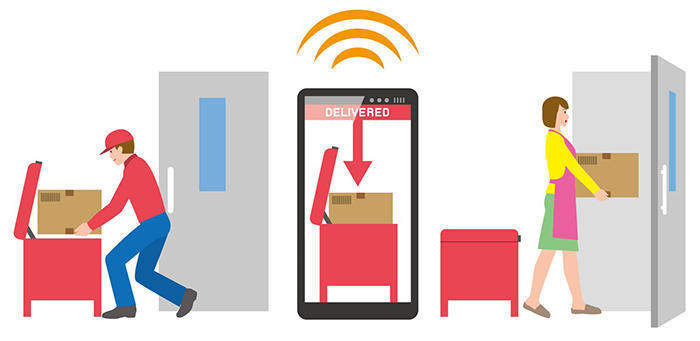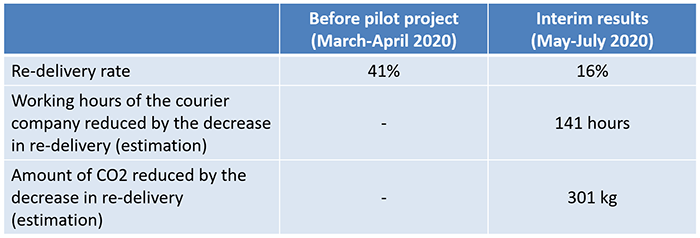"COOL CHOICE" - a national movement to stop global warming in Japan
July 21, 2020

In 2015, with the participation of all countries, the international framework, the Paris Agreement, for climate change countermeasures from 2020 onwards was adopted. The long-term goal is to keep the global temperature increase to below 2 degrees Celsius above pre-industrial levels and to pursue efforts to limit the temperature increase even further to 1.5 degrees Celsius.
Based on the Paris Agreement, Japan has set a goal of reducing greenhouse gas emissions by 26% in FY 2030 compared to FY 2013. In order to achieve this goal, a significant reduction of approximately 40% is required in the household and business sectors. The Japanese government has been promoting to "replace with eco-friendly products", "choose eco-friendly services" and "choose eco-friendly lifestyles". This is called "COOL CHOICE" national movement that encourages "wise choices" that contribute to the carbon-free society.
A well-known measure is "COOL BIZ", which encourages clothes that can be comfortably used at room temperature of 28 degrees Celsius. It was launched in 2005 and has already widespread in many companies and government offices in Japan. In addition, 3R (Reduce, Reuse and Recycle) and saving electricity are also basic actions of COOL CHOICE.
4 promotion campaigns of COOL CHOICE
There are four COOL CHOICE promotion campaigns.
1. Five Star Home Appliance Replacement Campaign

This campaign calls for "replacement with energy-saving home appliances (home appliances with a unified energy-saving label)" and "replacement with LED lighting."
- Replace refrigerators and air conditioners with one with a large number of stars within 10 years.
- Replace the lighting with LEDs.
2. No re-delivery campaign

To prevent the re-delivery of couriers that will increase CO2 emissions, this campaign calls for receiving packages in one go without re-delivery.
3. Eco housing campaign

To promote energy conservation and decarbonisation of houses, this campaign calls for replacements with high heat insulation and energy conservation houses and energy conservation reforms.
4. Eco car campaign

This is a campaign that calls for replacement with eco-cars that are friendly to the earth.
- Eco cars are entitled to a tax preferential system and can be purchased at a discount.
- Electric vehicles such as hybrid vehicles and electric vehicles have better fuel efficiency than conventional gasoline vehicles.
- Electric vehicles and fuel cell vehicles do not emit CO2 while driving.
No re-delivery campaign
Among these campaigns, "No re-delivery campaign" is most closely associated with logistics. Various socio-economic activities and our daily lives are supported by the logistics system including courier services. Since re-delivery of courier increases environmental load and decreases labour productivity of drivers, efforts are necessary to reduce re-delivery.
In Japan, more than 4.3 billion parcels are delivered by courier every year, and now courier service is indispensable for everyday life, such as online shopping, ordering local special products, and delivering heavy parcels. However, approximately 20% of them are re-delivered, and CO2 emissions incurred by re-delivery amount to 420,000 tons per year.
This campaign calls for two actions. First of all, when sending a package, tell the recipient that you will send a parcel by e-mail or telephone, check the date and time that the other party can receive it, and specify the delivery date and time. When you receive your parcel, you should receive it in one go without re-delivery by designating the time slot at the time you can receive it and by designating a place where you can receive your parcels, such as your home, a courier service office, a convenience store, etc. It is also important to change the pick-up location and/or time, using a delivery notification service, from your PC or mobile phone to reduce re-delivery in case it is inconvenient to you.
In an example of a company, they recommend "receiving parcels at a workplace", including personal ones shopped online, for employees of households where there is no one to receive parcels at home during the day, such as double-working and single-family homes. In most offices, there is at least one who can receive the parcel during business hours; therefore it is more likely that the parcel can be received in one go.
Two actions for "No re-delivery campaign"
-
- When sending parcels
(1) Tell the recipient beforehand that you will send a parcel by email or phone.
(2) Confirm the date and time that the recipient can receive and specify the delivery date and time. - When receiving parcels
(1) Specify the time slot that you can reliably receive to receive the parcel in one go.
(2) Designate a place where you can reliably receive to receive the parcel in one go.
(e.g., Home, courier service offices, convenience stores, delivery lockers, etc.)
(3) By using a delivery notification service provided by courier service companies, change the delivery location and/or time on your PC or mobile phone in case it is convenient to you, to receive the parcel in one go.
- When sending parcels
Source: https://ondankataisaku.env.go.jp/coolchoice/butsuryu/wecando/
Example of delivery box utilising IoT

There is an example of combining IoT technology with delivery boxes for houses. A delivery box for houses is a locker to be placed in front of the entrance of a house, with functions such as number keys. Parcels can be delivered in the delivery box without face-to-face communication. To receive parcels from the box, a recipient takes out the parcel with a PIN code that is set in advance.
In a pilot project conducted from May to July 2019 in approximately 100 households in Tokyo, in addition to the functions of the conventional home delivery box, the IoT home delivery box was combined with a smartphone operation. This further improved security and usability. Notifications will be sent to users' smartphones as soon as the parcel arrives, and the delivery box can be locked and unlocked with a simple smartphone operation. Besides, she/he can put in the parcel to the delivery box before leaving the house, set a PIN code and request for collection with a smartphone.
Data from this pilot project questionnaire (98 cases) showed that the re-delivery rate was reduced from 41% to 16%, and the working hours of the delivery drivers were reduced by 141 hours during the pilot project. Also, 90% of users improved the stress of receiving parcels, and 301kg of CO2 was estimated to be reduced.
Table: Result of IoT home delivery box pilot project (interim results)

Source: https://ondankataisaku.env.go.jp/coolchoice/butsuryu/topics/20200324.html
Support for the no re-delivery campaign
As of July 1, 2020, 62 groups and 216 companies have agreed to the campaign, and Nippon Express is also one of them. Although the purpose of this campaign is to prevent an increase in environmental load and a decrease of labour productivity of drivers due to the courier re-delivery, it is expected to have a positive impact on the industry, such as measures to cope with the labour shortage and improvement of working conditions of delivery drivers.
This report was written based on information as of 7th July, 2020.
Reference:
- COOL CHOICE website, Ministry of the Environment, Government of Japan (in Japanese only)
https://ondankataisaku.env.go.jp/coolchoice/